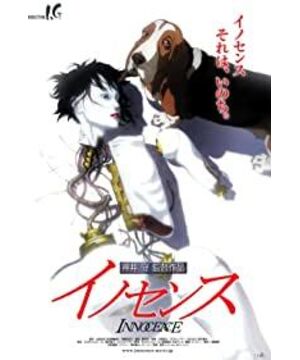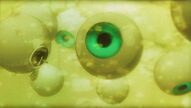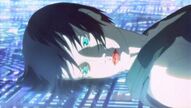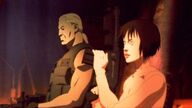2020 update: Looking back at the movie review I wrote a few years ago, I actually said at the beginning that I am not a scifi or anime fan... It seems that this movie really inspired another side of my life
As a non-scifi fan and non-anime fan, I didn't do my homework or prepare for depression. However, after watching the movie carefully, all that surrounds my mind are the sad female voices and the scattered drum beats in the bgm puppet ballad, as well as the puppet's pale skin and attractive eyes---what kind of eyes can green glass eyes have, it's like Some people say that Bart's bottle cap eyes can have what kind of eyes, but such androids or robots are vivid, desperate, sad, and crazy. From the very beginning, the dolls that suddenly exploded and the human figures used as "specimen" in the laboratory seemed extremely mysterious and real.
The puppets in the film are brutal and out of control. These (sex) toys are not only mechanical components, but are injected with ghosts, become living bodies, are produced to serve their masters, but are also manipulated to fight by people with a heart. An interesting point conveyed by the film is that the dolls satisfy the pleasure of human reproduction and raising children. Descartes made a doll after the child died. Humans and children have no memory, knowledge, morality, or restraint, and some are just super-strong learning abilities, only to be shaped by others and society. Therefore, the concept of artificial human has existed since the origin of human beings. The living child we think we are raising is just another shell into which we imbue memory and thought. And what about itself? Is what it knows natural or man-made? Each of us is not such a righteous body—there is no absolute truth, only relative relationship; it is natural and not natural.
The memory carrier is very interesting, just like DNA is the memory carrier of human memory, the human brain is our inner memory carrier, and the body (or prosthesis) is the external memory carrier. In the information age, the external memory carrier It is computer storage or network cloud. Cities and buildings are also a huge external memory storage device, connecting social groups, past and future generations. The most beautiful depiction of the city in the movie is the steel stupa, which is gently wrapped by the golden sunlight, although they will enter an infinite loop of mazes next. (I have to say that Naruto’s Yuyin Village and Tsukiyomi have a strong color of shelling—the once unfathomable secret technique will be realized by technology sooner or later, which makes people panic and look forward to it.) Fear of artificial humans, or It is the fear of Alpha Dog today, but it is actually the fear of whether human beings are reduced to matter and machinery, in other words, the fear of whether human existence itself is nothing. But what about the dolls? Aren't they lonely and helpless too? The perfect prosthesis also has its shortcomings, and the inability to control one's head is the most terrifying. Not only dolls, but prosthetics like Bart fear the protection systems they rely on go awry and get hacked, leading to uncontrolled movements. The dolls chanted "help, help," and their bodies fell apart. In the end, when the army of dolls attacked and fought uncontrollably, with bgm's mournful female voice, it made people's hearts break into scum.
Bart and the dog
The children and the puppet also want to talk about Kenji Kawai's music. It's so cool, lively and passionate, but also gloomy and cursed, full of emotion and quantification. The sound of the violin was melodious and the drums were fast, and the female voice was sharp as if it were electronic. We often divide digital (electronic) and analog (analog), analog is primitive, perceptual, and changeable, while digital is systematic, quantified, and definite, but in fact the relationship between the two is very fluid. Digital not only refers to computers, but also language, numbers, and musical notes. With the progress of civilization over time, these things that were regarded as rigid and ruthless in those days have derived infinite changes. The certainty (non-blind worship) promoted by humanism The accuracy of digital is similar, so there have been innovations in industrial technology after that. This kind of puppet is compatible with electronics and emotions, with traditional Japanese tunes, and with the beginning of each of the three sections of the film (the first section is the production and assembly process of various parts of the puppet, and the second section is the production and assembly process of the puppet. Better than the nightmarish grand parade in the Red Hot Chili Peppers, where Bart invades the thief ship in the third segment, or more precisely as a virus invading the enemy's central system). Finally, returning to the quote
View more about Ghost in the Shell 2: Innocence reviews











